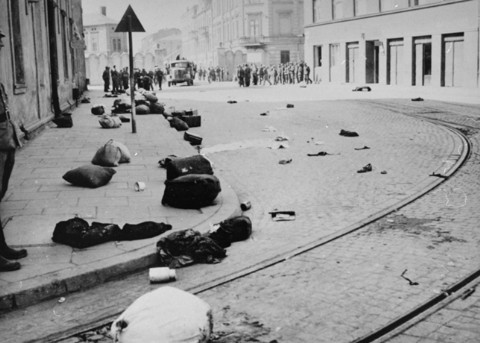Maturity
Despite all the wars and foreign occupation, the city’s population boomed again, reaching 40,000 by 1850. By 1860 it had become the 6th largest city of the Austrian Empire. In 1866 the defeat of the Austrians in the Austro-Prussian War partly restores Krakow’s political autonomy, which would be now governed by its own local Governorate Commission the Komisja Gubernialna.
The City Council could elect its president. That made Krakow a symbol of the nation’s cause for self-determination. More and more Poles flocked to the Polish cradle, moving Krakow up one position in the Empire’s population ranking. The School of Fine Arts, the Academy of Learning, the National Museum of Krakow, Park Krakowski, and the Municipal Theatre are all established in the second half of the 19th century and the iconic Cloth Hall was built during the Golden Age and later fallen into disrepair is fully restored.



The city enters the 20th century under a current of modernization, with electricity, running water, trams & parks in the place of the fortified walls. The incorporation of the surrounding suburban communities into a single administrative unit & a wave of migration from the countryside doubles the city’s population by the First World War to more than 150,000 residents. The Polish army is tied to the Austro-Hungarian chariot which eventually loses the war and accepts the terms of the Treaty of Versailles that established the first sovereign Polish state in over a century. Warsaw instead of Krakow would serve as the nation’s capital.


Krakow remained the most important city in Poland after the country’s capital until 1939, when Hitler’s Third Reich created a protectorate, the puppet state with the Polish general governor’s residence in Wawel Castle. Although the city’s monuments weren’t destroyed during the Second World War, Krakow became a place of martyrdom for the Jewish people who were first confined within the Krakow ghetto in the district of Podgórze established in March 1941.
A series of deportations to the Bełżec extermination camp ended with the ghetto’s liquidation in March 1943, after which the remaining Jews were transferred to the Płaszów and Auschwitz concentration camps. Before the German invasion, more than 55,000 Jews lived in Krakow. Few managed to escape death, among them 1,000 Jews hired in the factory of the German industrialist Oskar Schindler who managed to save their lives by employing them in his enamelware factory in Krakow.


After the war, as part of the communist People’s Republic of Poland Krakow was put under the total political control of the Soviet regime with the city’s universities deprived of printing rights & any autonomy whatsoever. The Stalinist regime focused its efforts on the growth of heavy industries and in that context, the Lenin Steelworks (Sendzimir later) and its auxiliary city of Nowa Huta (New Steel Mill), were both built from scratch in the early 1950s near Krakow. Industrialization and incorporation of the surrounding areas into one civic body catapulted the population to more than 400,000 by 1955.


In 1978 Krakow’s Old Town & the Kazimierz district were both placed on the UNESCO World Heritage list as two prime examples of urban architectural quality, in terms of both their cityscape and their outstanding monuments. “The historic center of the old town admirably illustrates the process of continuous urban growth from the Middle Ages to the present day”. In that same year (1978), Krakow’s Archbishop Karol Wojtyła (Pope John Paul II), becomes the first non-Italian Pope in 455 years.


After almost two decades of underdevelopment, of food rations, surging inflation, and lack of basic products like meat and sugar, of two years of martial law (1982-1983), in 1989 Lech Walesa becomes the first post-communist president of Poland, after 45 years of Soviet dominance.



After a necessary period of readjustment that was, in essence, the decade of the ’90s, starting with the year 2000 and its role as a European Capital of Culture, Krakow, reinvented itself inside the European Union’s edifice in the 2000s. (Poland was admitted to the EU in 2003 after 7 years of negotiations). Today Krakow is Poland’s second-largest city, with a core population of about 770,000 and a wider metropolitan population of 1.4 million.
The city is considered to be the crown jewel of Poland’s historical & architectural heritage and is of course a major tourist magnet with more than 9.6 million visitors in 2018 alone. It is a major center of education for Poland with no less than Twenty-four institutions of higher education offering courses to more than 200,000 students. It is also a vibrant entrepreneurship center, home to more than 50 multinational companies and hundreds of startups employing more than 5.000 people. The future seems bright for both Poland and the beautiful bride of the Vistula River. Krakow. The city of Kings.





